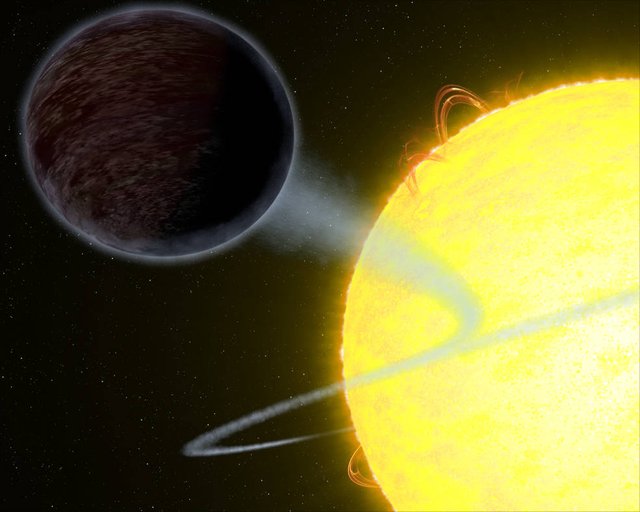NASA's Hubble Captures Blistering Pitch-Black Planet

From NASA
NASA's Hubble Space Telescope has observed a planet outside our solar system that looks as black as fresh asphalt because it eats light rather than reflecting it back into space. This light-eating prowess is due to the planet's unique capability to trap at least 94 percent of the visible starlight falling into its atmosphere.Read more: https://www.nasa.gov/feature/goddard/2017/hubble-captures-blistering-pitch-black-planetThe oddball exoplanet, called WASP-12b, is one of a class of so-called "hot Jupiters," gigantic, gaseous planets that orbit very close to their host star and are heated to extreme temperatures. The planet's atmosphere is so hot that most molecules are unable to survive on the blistering day side of the planet, where the temperature is 4,600 degrees Fahrenheit. Therefore, clouds probably cannot form to reflect light back into space. Instead, incoming light penetrates deep into the planet's atmosphere where it is absorbed by hydrogen atoms and converted to heat energy.
It's a good thing they fixed that lens.
Leave your thoughts in the comments.
Follow @contentjunkie to stay up to date on more great posts like this one.

Good post
This is SOOOOOO interesting! You're basically saying it's so hot it won't form an atmosphere that reflects light---so it absorbs it. That's crazy.
This post has received a 25.50 % upvote from @bellyrub thanks to: @contentjunkie.
This post has received a 16.12 % upvote from @booster thanks to: @contentjunkie.
Whoa! Fear of a Black Planet! ;)